Fall Color and November Leaves
One of the most spectacular things about this time of year is the way the low-angled fall light catches in the remaining autumn leaves.
Daylight savings time is over and nights are getting cold, but tenacious spots of fall color are still all around us. Most days are still quite pleasant out, provided you have a hat and a jacket, so it's a good time of year to get out of the house and appreciate the outdoors before the cold of winter truly sets in. So what can we look for outside this time of year?
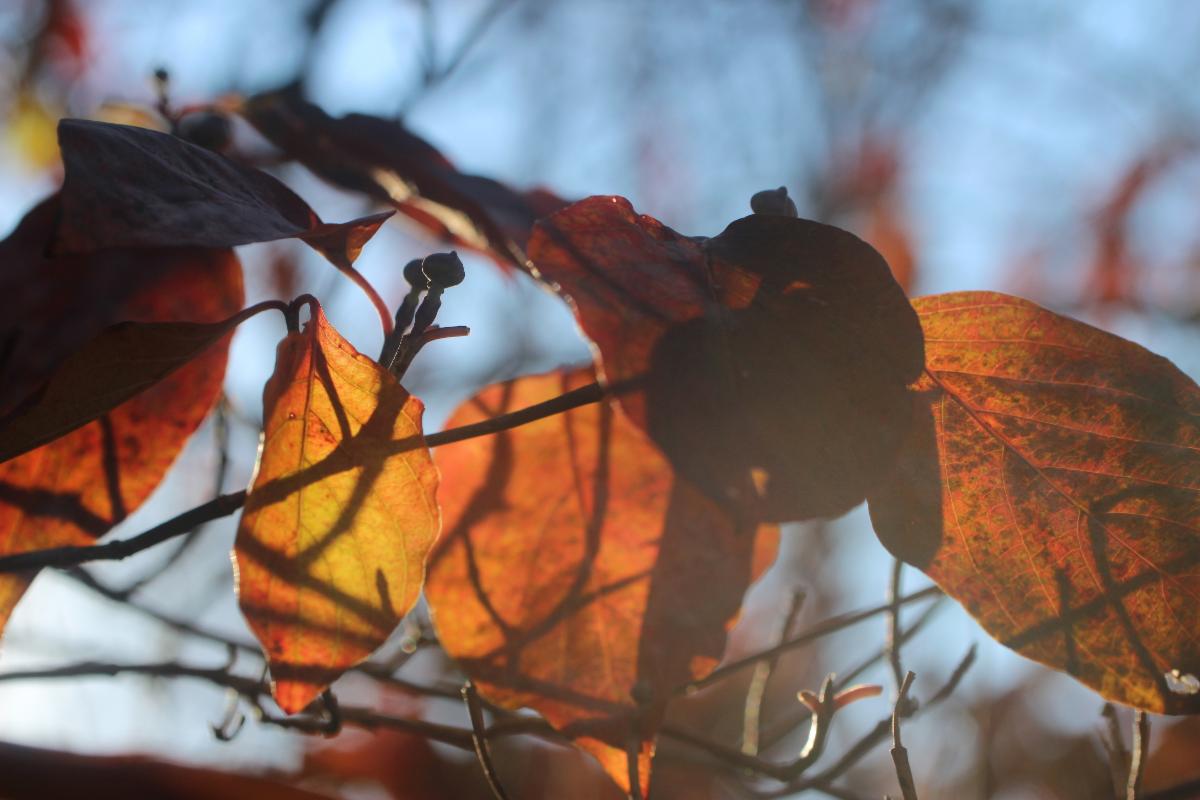
Flowering Dogwood, Cornus florida
Shapes and Colors, Lights and Sounds
After summertime's riotous green, there can be something almost meditative about a season where each remaining leaf deserves its own individual attention.
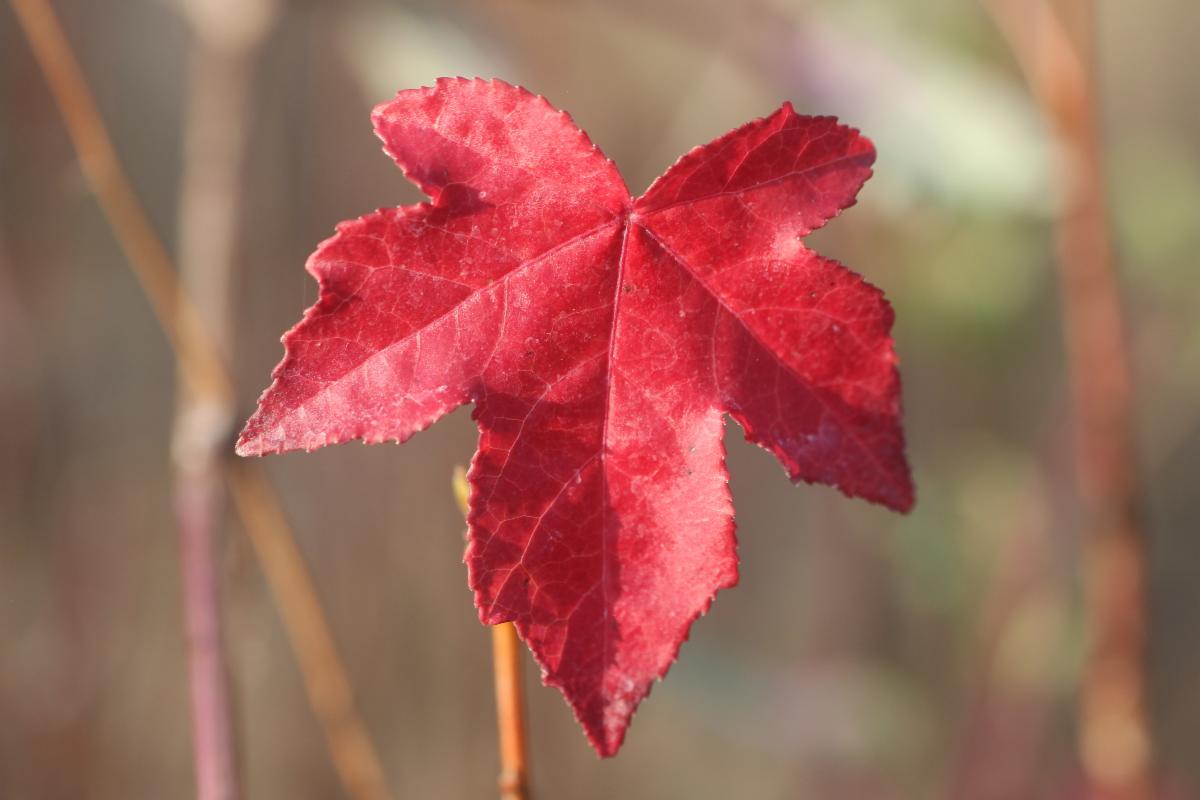
Sweetgum, Liquidambar styraciflua
Many people have trouble adjusting to the cooler, darker seasons, especially after the time change. But there's still plenty of ways to enjoy the outdoors; after all, there's a reason people romanticize autumn! Step outside and you may hear the distinctive sound of a squirrel working its way through a tough black walnut shell, or geese calling out from their v-shape overhead, or even a loose flock of robins chirping as they gather together for the winter. You may smell fallen leaves breaking down after a rain, or that sharp smell that follows a morning after a frost. And of course, there are the sights.
Autumn is rightfully famous for its colors, and the play of color and light is anything but a static experience. Sugar Maples (Acer saccharum) are one of the most famous species for producing fall color, but that color is far from a solo act, and it generally comes in stages.

First come the poplars (Populus spp.) and birches (Betula spp.), lining waterways with eye-catching yellow foliage. Then the maples (Acer spp.) start to turn, reds and oranges starting at the tops of mountains and slowly working their way downward, blending with reds, dark purples, and oranges of oaks (Quercus spp.). American sycamores (Platanus occidentalis), American beeches (Fagus grandifolia), yellowwoods (Cladrastis kentukea), sourwoods (Oxydendrum arboreum), black tupelos (Nyssa sylvatica), northern spicebushes (Lindera benzoin), cherries (Prunus spp.), American hackberries (Celtis occidentalis), common buttonbushes (Cephalanthus occidentalis), viburnums (Viburnum spp.), and eastern redbuds (Cercis canadensis) all change color at slightly different times, making the landscape into a shifting kaleidoscope of colors that last far longer than any single tree could.
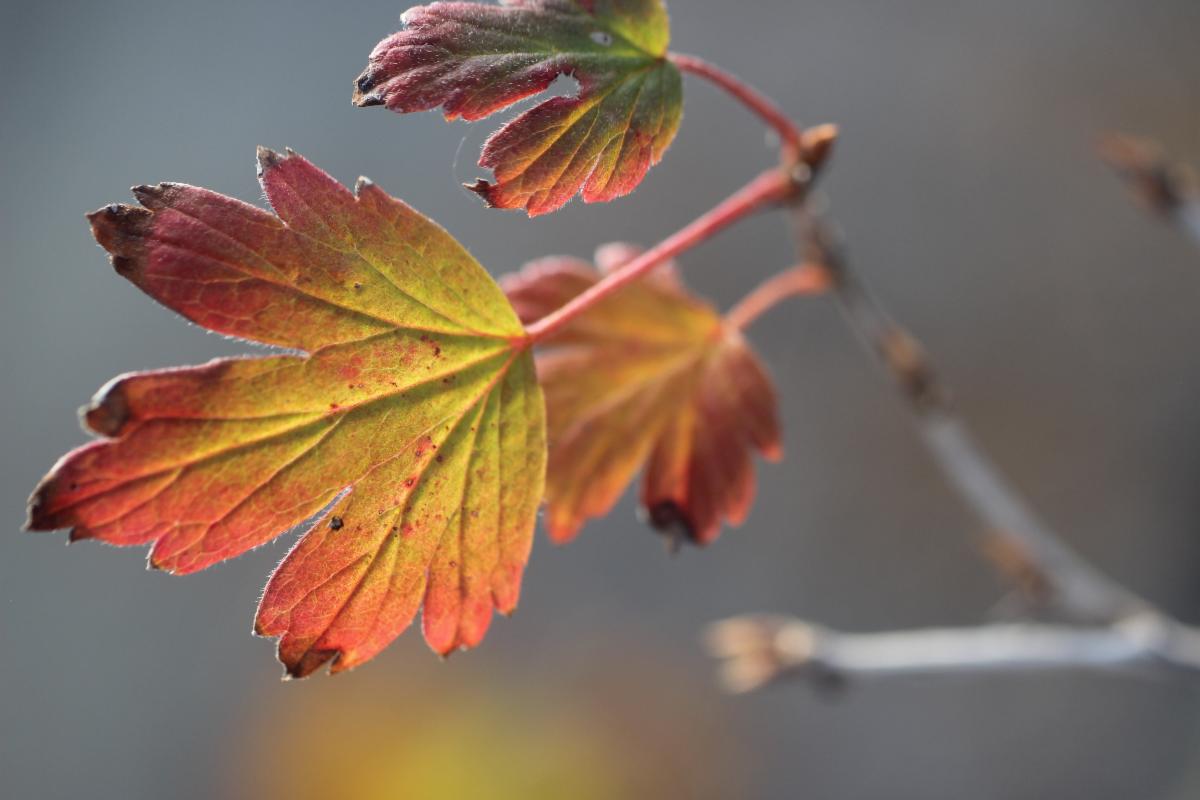
Missouri Gooseberry, Ribes missouriense
There's another layer though, one that often goes unsung, which is the color of the autumn understory. Much of what still holds color and fall interest at this time of year are shrubs and small trees that have been sheltered from the wind as larger trees have lost their leaves. Native dogwoods (Cornus spp.) in red and orange, roses (Rosa spp.) in yellow and purple, gooseberries (Ribes spp.) in shades of yellow and red, Sumacs (Rhus spp.) in bright reds and oranges--many of them are still putting on a show. And it's not just shrubs and woody species that are still keeping things interesting!
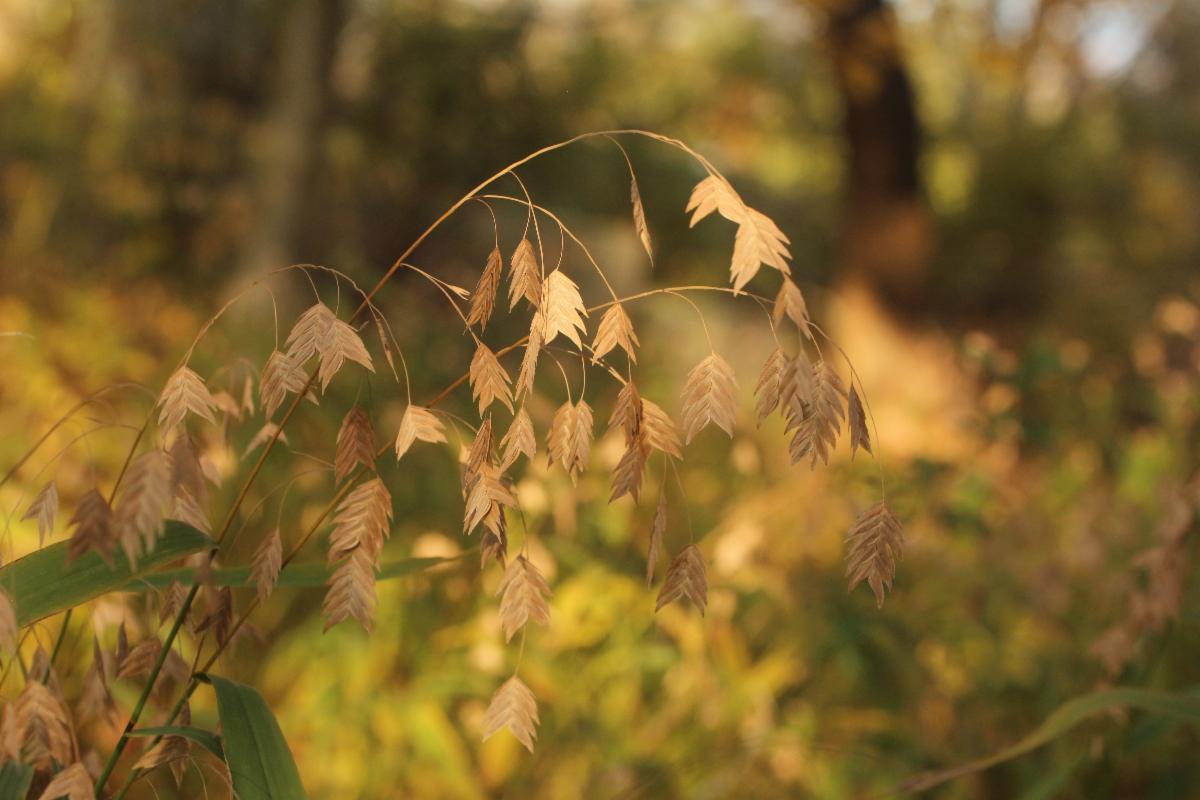
River Oats, Chasmanthium latifolium
There are many species of herbaceous plants that continue to look interesting as the leaves fall. One of my personal favorites is River Oats (Chasmathium latifolium) aka Spangle Grass. One of the things I like best about this species is that it stays showy all winter long. Even in places with strict rules about winter garden care, you have an excuse not to cut it back, which then makes it an invaluable source of shelter (and food! see those dangling seeds?) for wildlife. It makes a wonderfully dense garden filler, and ours is always delightful to watch in the winter because it's always full of birds, often with a bonus handful of mourning doves sheltering under the overhanging seedheads.
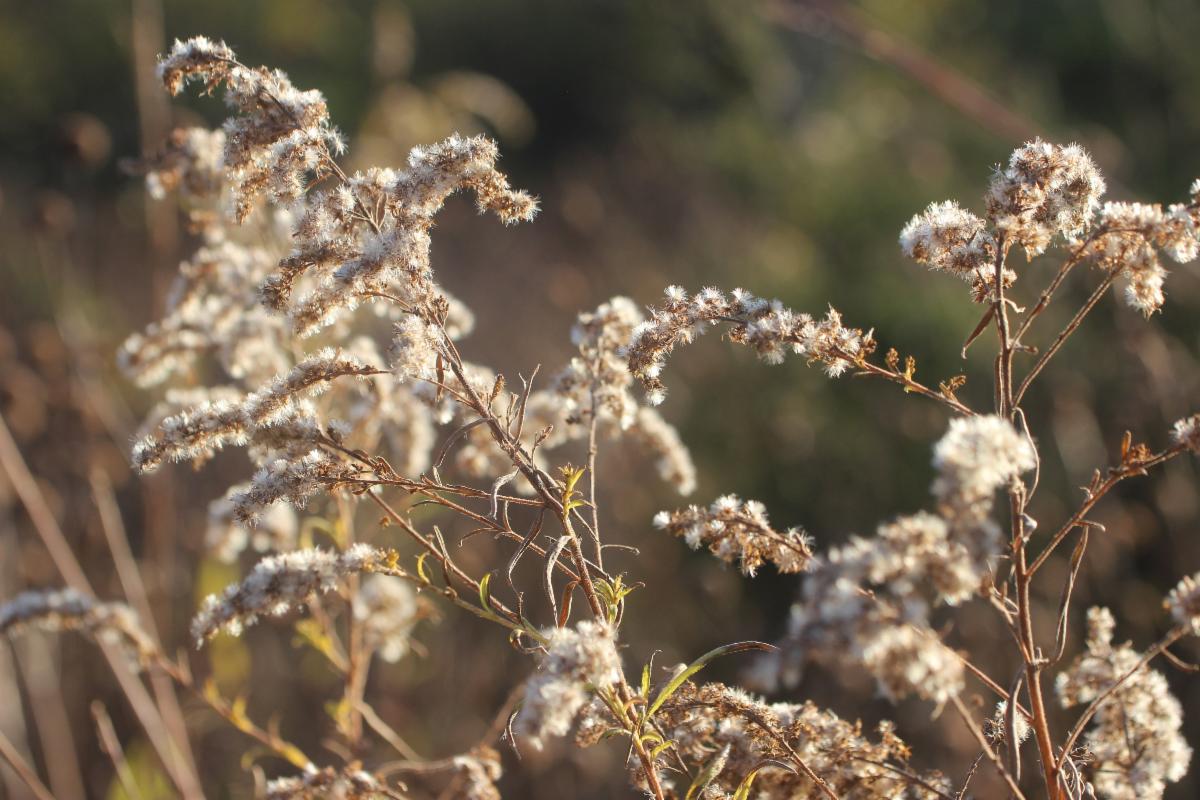
Late Goldenrod, Solidago altissima
Meadow plants are also one of my favorite sights in the fall and winter. The textures of the seedheads and the shelter they provide for birds and wildlife make meadows one of the liveliest places to visit in fall and wintertime. Goldenrods (Solidago spp.), monardas (Monarda spp.), and mountainmints (Pycnanthemum spp.) in particular continue to provide delightful spots of texture that make the winter landscape more interesting.

Pennsylvania Blackberry, Rubus pensilvanicus
And of course, not every plant even loses its leaves in the wintertime. Evergreens, like American holly (Ilex opaca) or white pine (Pinus strobus), keep their leaves all year long, of course. But some plants compromise. Their leaves change color in the autumn, but they don't actually all fall. Certain species of raspberries do this, like Pennsylvania blackberry (Rubus pensilvanicus) and (in particular) dewberries like northern dewberry (Rubus flagellaris). These semi-evergreen plants usually turn an interesting color and then stay that way until spring, which makes for a particularly nice surprise when walking in wintertime woods.
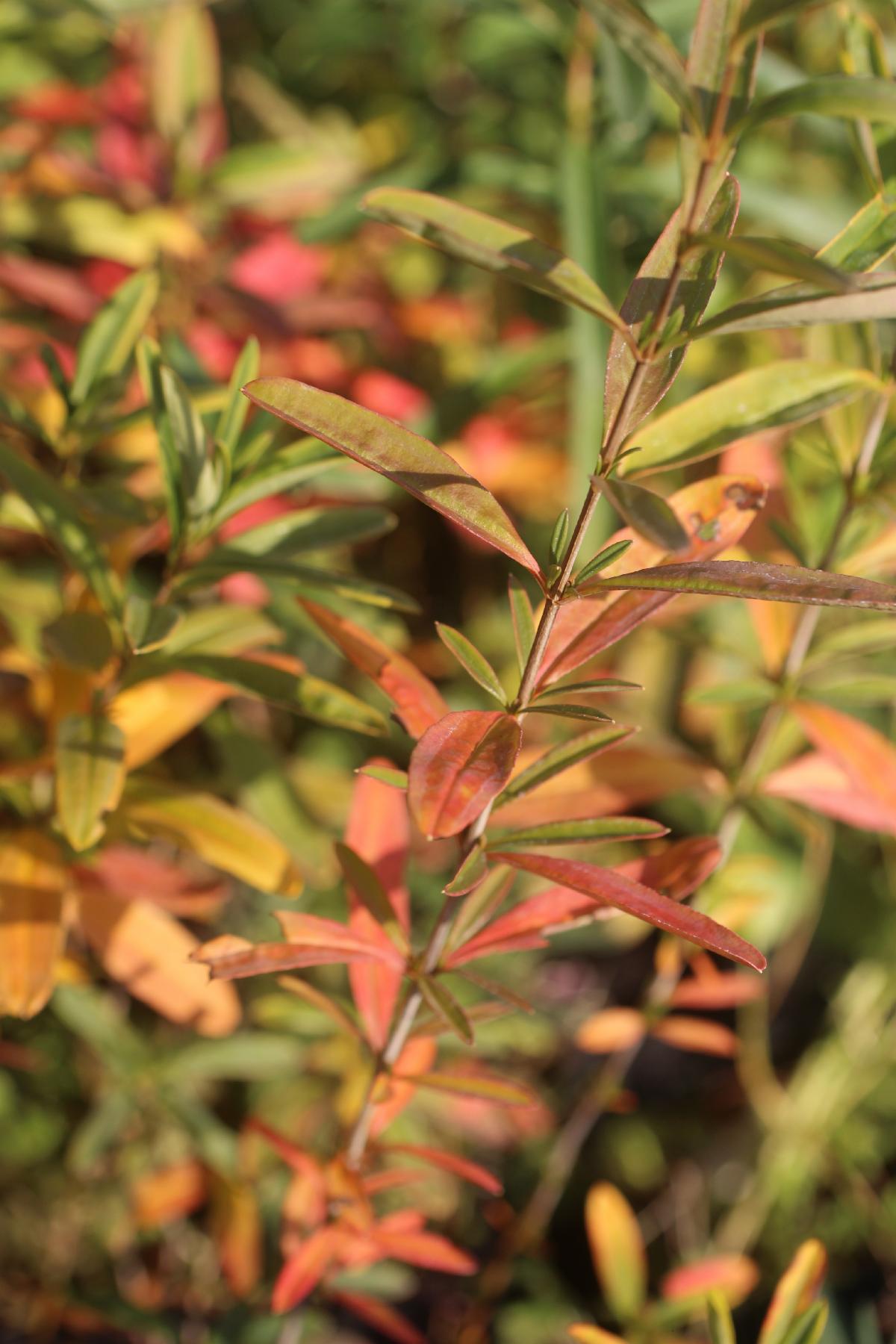
Shrubby St. Johnswort, Hypericum prolificum
In short, the growing season may be wrapping up, but that doesn't mean the show is over! We hope you've enjoyed this small, virtual walk through the woods (yes, all these pictures were taken within the past week at our farm!), and that you can go out to your own woods and enjoy some of these sights yourself in the coming weeks. There's still plenty to see out there, from salamanders, to migrating hawks, to the arrival of wintertime birdsong and the first dustings of snow. Keep an eye out for frost on those still-colorful leaves in the angled morning light, put on a warm sweater, and enjoy a hot drink. Autumn has more to offer than people give it credit for!
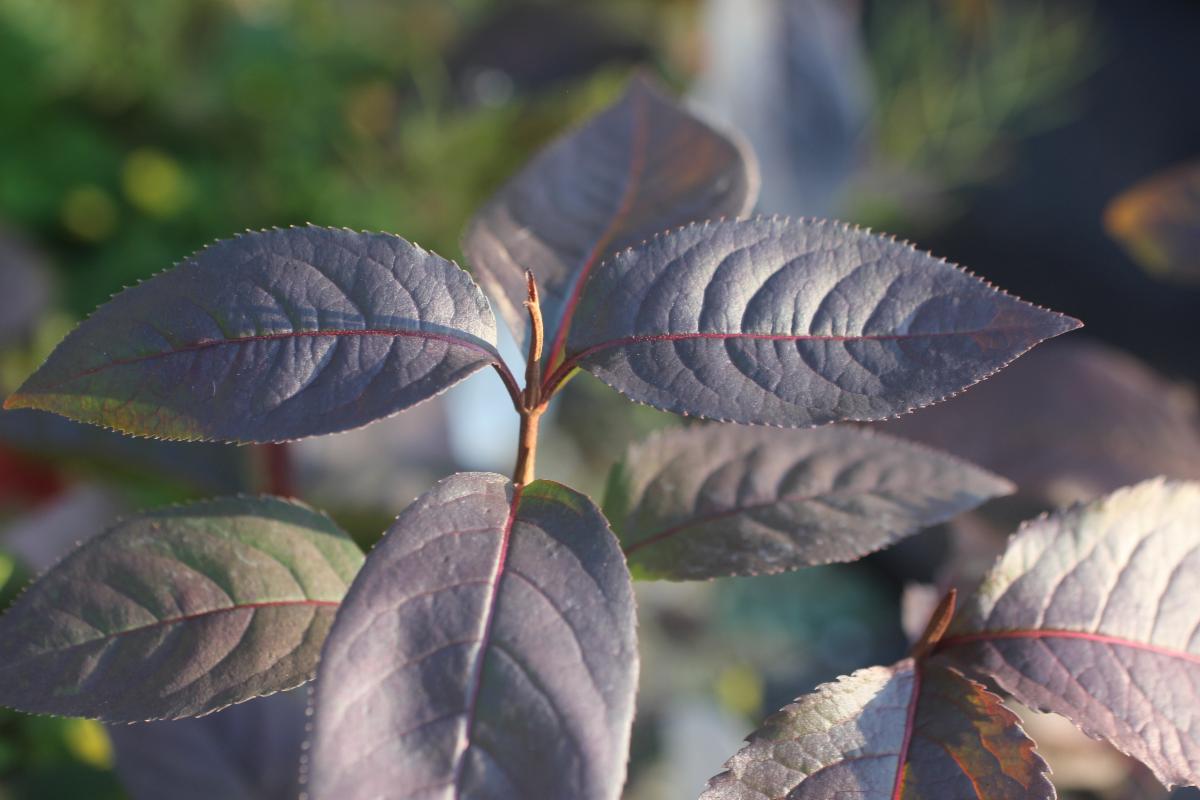
Nannyberry Viburnum, Viburnum lentago
Curious who the plants are in the pictures? You can click on any picture caption to visit its link on our website (or just take a look at this list!).
- Flowering Dogwood, Cornus florida
- Sweetgum, Liquidambar styraciflua
- Swamp Rose, Rosa palustris
- Kentucky Yellowwood, Cladrastis kentukea
- Missouri Gooseberry, Ribes missouriense
- River Oats, Chasmanthium latifolium
- Late Goldenrod, Solidago altissima
- Pennsylvania Blackberry, Rubus pensilvanicus
- Shrubby St. Johnswort, Hypericum prolificum
- Nannyberry Viburnum, Viburnum lentago
